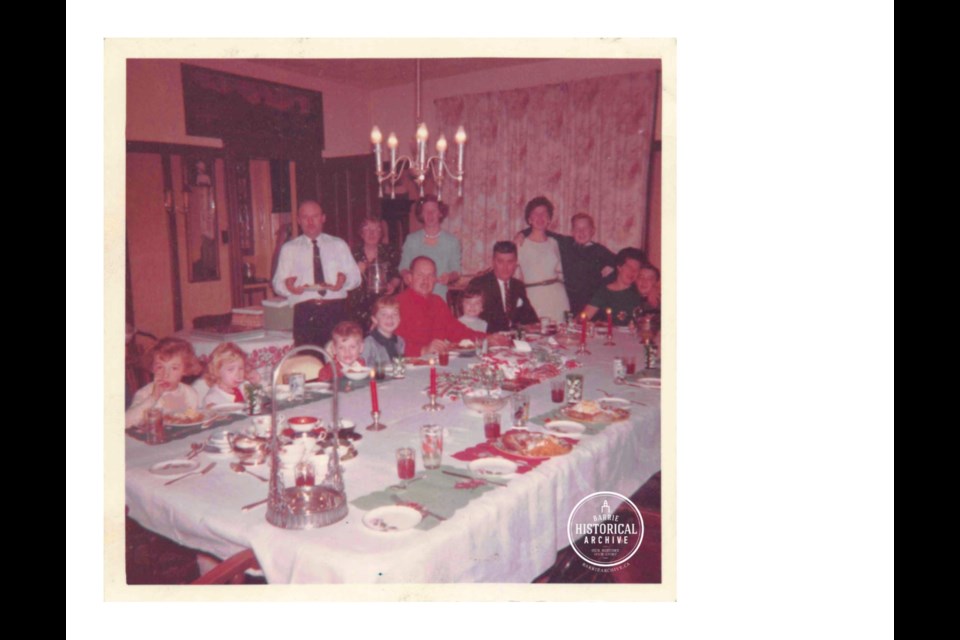“There is no delight so wholesome and so enjoyable to the average man or woman as that which comes through causing sweet innocent happiness in a child."
Those were the opening words in a brief Northern Advance article from December 1916 as the Children’s Shelter in Barrie was celebrating its second Christmas.
“Now just think what a grand opportunity this gives you to make them joyful. Just a few toys, candies fruit or nuts will work wonderful wonders in them and you.”
This refuge for children with nowhere else to go was the result of an extremely charitable act by a man, with little prestige or money, who possessed a kind heart and had seen more than his fair share of tragedy.
Nicholas Cotter was a shoemaker by trade and lived in a simple frame house on the north side of Worsely Street. Sandwiched between the very old stucco-covered log row house on the corner, and the much grander brick homes along the street, number 76 was nothing fancy.
Mr. Cotter had arrived from Penetanguishene as a young man and married Sarah Bailey shortly thereafter.
The couple remained childless for many years, but were pleasantly surprised by the arrival of a daughter in 1902. Alice May Cotter was born when her parents were past the age of 40 years.
In 1912, Sarah Cotter was already struggling with the effects of the dreaded tuberculosis bacterium when meningitis arrived in the household and cruelly took away her nearly 10-year-old daughter.
Two years after the passing of Alice May, Sarah herself was gone.
Nicholas Cotter could not bear to be in his house alone. Within weeks of Sarah’s death, he offered his home to the local Children’s Aid Society and asked that it be known as the Alice May Cotter Children’s Shelter.
A reporter for the Barrie Examiner toured the shelter just after its December 1914 opening.
“The Shelter is a roughcast building of medium size situated in Worsley Street, one of the prettiest and best kept streets in the Town and the view from its windows is cheerful. The grounds are not extensive but are clean and well-kept.”
The article went on to describe the freshly cleaned and painted interior and strong floral scent throughout owing to the multitude of congratulatory bouquets in every corner of the house.
Rows of tiny cots were observed in the dormitory rooms, the kitchen and bathroom were deemed to be most modern and a hospital room, for those common but deadly illnesses of the time, was noted.
The writer didn’t fail to see a fitting piece of décor in the girls’ sleeping quarters.
“One of the pictures is a daguerreotype of sweet little Alice May Cotter and one is reminded in looking at it that her short life has not been in vain.”
The resident children came from all sorts of circumstances. Most arrived into care as a result of a parent’s death, incarceration or indefinite hospitalization.
These were still cruel days for those who had met with unfortunate circumstances beyond their control.
The poor and the elderly with no family still regularly passed away within the walls of the Barrie Jail, their only shelter.
Before Mr. Cotter’s generous act, children in need had been cared for by a network of caring families in their own homes in Barrie. The Alice May Cotter Shelter centralized the work that had been going on in the town for some 20 years by then.
Within a couple of years, Children’s Aid Societies and shelters became government regulated and, as Barrie was the county town, the natural choice for a common children’s home was in this community.
Mr. Cotter’s house, which could accommodate 12 to 14 young ones, was too small for this purpose and the shelter relocated to 172 Elizabeth St.
The good-hearted shoemaker lived out the rest of his days in his Worsley Street home, with his second wife, Joanna, whom he married in 1917. He passed away on July 19, 1922.
Each week, the Barrie Historical Archive provides BarrieToday readers with a glimpse of the city’s past. This unique column features photos and stories from years gone by and is sure to appeal to the historian in each of us.



